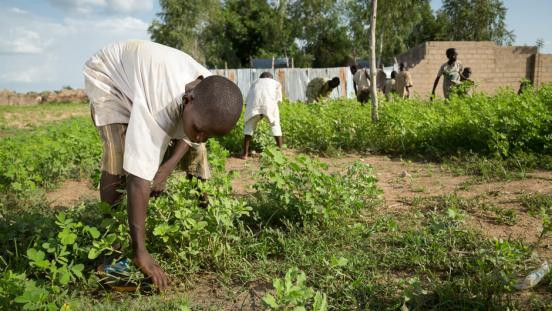
Climate change today is no longer a distant environmental concern. It is an everyday economic, social, and human reality that is deepening poverty, eroding livelihoods, and threatening food and water security — particularly in developing nations like Zimbabwe.
With erratic rainfall, prolonged droughts, and flash floods becoming the norm, Zimbabwe’s rural and urban poor are finding it increasingly difficult to adapt.
Yet amid these growing vulnerabilities, one of the most powerful tools for resilience remains vastly underutilised: social protection.
Social protection systems — which include cash transfers, public works programmes, social insurance, and safety nets — are not acts of charity.
They are deliberate development investments designed to help citizens weather crises, rebuild livelihoods, and participate in the economy. In the context of climate change, they can mean the difference between a temporary setback and a cycle of intergenerational poverty.
For Zimbabwe, adopting a more integrated and climate-smart social protection strategy could be a game-changer for national resilience and inclusive growth.
The connection between social protection and climate resilience is often misunderstood.
While many see climate adaptation in terms of infrastructure — dams, irrigation systems, or solar farms — true resilience also lies in human systems.
- COP26 a washout? Don’t lose hope – here’s why
- Out & about: Bright sheds light on Vic Falls Carnival
- COP26 a washout? Don’t lose hope – here’s why
- Out & about: Bright sheds light on Vic Falls Carnival
Keep Reading
Social protection policies help ensure that when disasters strike, people are not forced to sell assets, pull children out of school, or resort to unsustainable coping mechanisms like overharvesting forests or migrating to already overburdened cities.
For instance, cash transfer programmes provide immediate relief while empowering households to make adaptive choices — investing in drought-resistant seeds, small livestock, or microenterprises.
Similarly, public works initiatives can create “climate assets” such as reforested areas, rehabilitated wetlands, or reinforced flood barriers, while offering employment to those most affected by climate-induced shocks.
This dual benefit — immediate income support combined with long-term environmental gains — makes social protection one of the smartest and most cost-effective climate investments a country can make.
Countries across the Global South have already demonstrated how social protection can drive resilience and reform.
In Ethiopia, the Productive Safety Net Programme (PSNP) has supported over eight million people annually by linking food and cash transfers with land restoration and water harvesting activities.
The programme not only reduces hunger but also rehabilitates degraded land, improving agricultural productivity over time.
Bangladesh, one of the world’s most climate-vulnerable nations, has embedded disaster preparedness into its social protection systems.
It uses cash-for-work and community-based insurance to support people before and after cyclones and floods.
Similarly, Brazil’s Bolsa Família programme links income support with education and health outcomes, empowering low-income households to escape the poverty trap while improving social inclusion.
These models illustrate that when social protection systems are well-designed, they don’t just cushion shocks — they transform economies by fostering equity, human capital, and resilience.
Zimbabwe’s social protection framework remains fragmented and underfunded, often reactive rather than preventive.
Programmes like the Harmonised Social Cash Transfer (HSCT), Public Assistance Programme, and Food Deficit Mitigation Programme have played crucial roles in supporting vulnerable households, especially during drought years.
However, these interventions are largely donor-driven and short-term.
They lack strong institutional integration with climate policies, economic planning, and local governance structures.
Furthermore, social protection in Zimbabwe has yet to fully embrace climate-smart design.
The country faces frequent droughts, especially in regions like Matabeleland and Masvingo, where smallholder farmers lose crops and livestock almost every season.
Instead of simply providing food aid after a disaster, Zimbabwe could invest in pre-emptive social protection programmes that help farmers adapt — such as subsidised weather-indexed insurance, community-based savings schemes, or green public works that restore ecosystems while generating income.
To unlock the transformative potential of social protection, Zimbabwe needs a deliberate reform agenda focused on integration, innovation, and inclusivity.
Integrate social protection into climate policy
Social protection should not be viewed as a welfare cost but as a core pillar of climate resilience and economic planning.
The Ministry of Public Service, Labour and Social Welfare should collaborate closely with the ministries of Finance, Agriculture, and Environment to ensure that climate financing, adaptation projects, and social safety nets reinforce one another.
Invest in data and early warning systems
A resilient social protection system depends on accurate, real-time data. Zimbabwe needs a robust national registry that can quickly identify and support vulnerable households when climate shocks occur. Integrating satellite and meteorological data with social databases would enable the government to deliver timely cash or food assistance before disasters strike.
Expand adaptive social protection programmes
Zimbabwe could replicate Ethiopia’s model by linking its public works programmes with land restoration, afforestation, and soil conservation projects.
By paying citizens to work on community resilience initiatives — like building small dams or rehabilitating wetlands — the government can simultaneously address unemployment, food insecurity, and environmental degradation.
Promote social insurance for smallholder farmers and informal workers
With over 70% of Zimbabwe’s workforce in the informal economy, traditional insurance schemes exclude most citizens.
Innovative instruments like weather-indexed insurance or microinsurance can protect farmers and small traders from climate risks, helping them recover faster and stay economically active Zimbabwe can tap into international climate funds, such as the Green Climate Fund (GCF) or the Adaptation Fund, to scale social protection systems. Blending public, private, and donor resources will be essential to build a sustainable financing
Social protection is not only about mitigating loss; it is about empowering people to thrive despite uncertainty.
It builds social cohesion, restores dignity, and strengthens trust between citizens and the state. In a country like Zimbabwe, where economic instability and climate pressures often intersect, investing in resilient social protection systems is an investment in peace, productivity, and progress.
The lesson from global experience is clear: resilience is not built in reaction to crises but through continuous, inclusive reform.
For Zimbabwe, embracing social protection as a climate and development strategy is not just a moral imperative — it is a pragmatic step toward sustainable growth.
By protecting its people today, the country can secure its future tomorrow.
*Gary Gerald Mtombeni is a journalist based in Harare. He writes here in his personal capacity. For feedback Email [email protected]/ call — +263778861608











